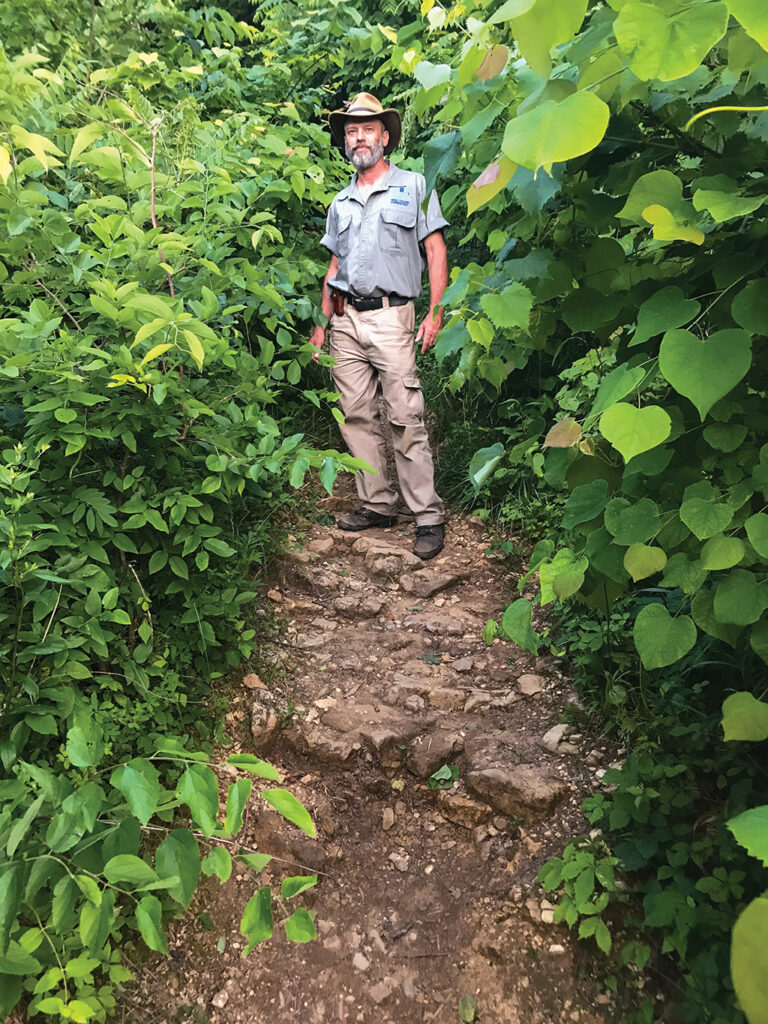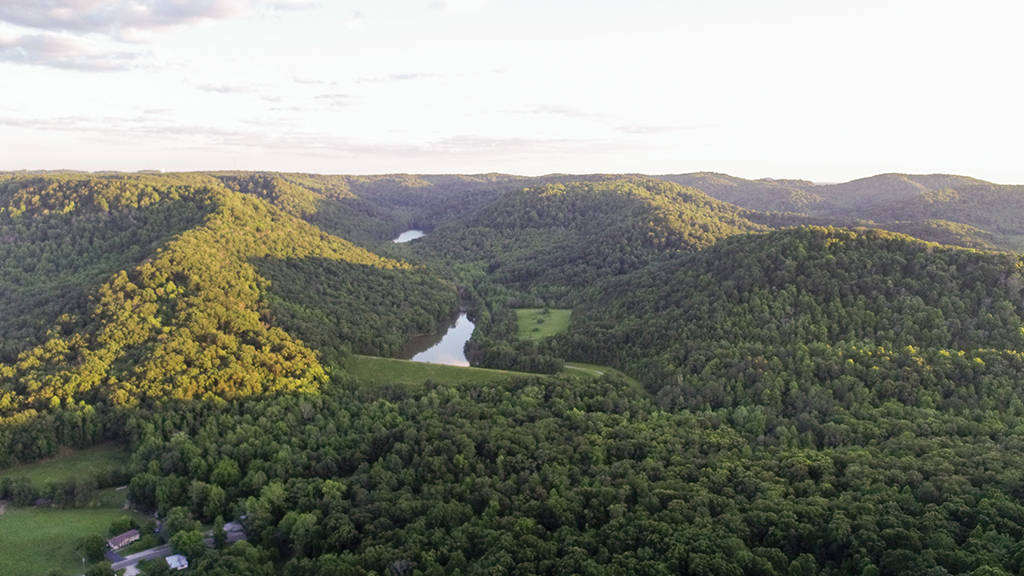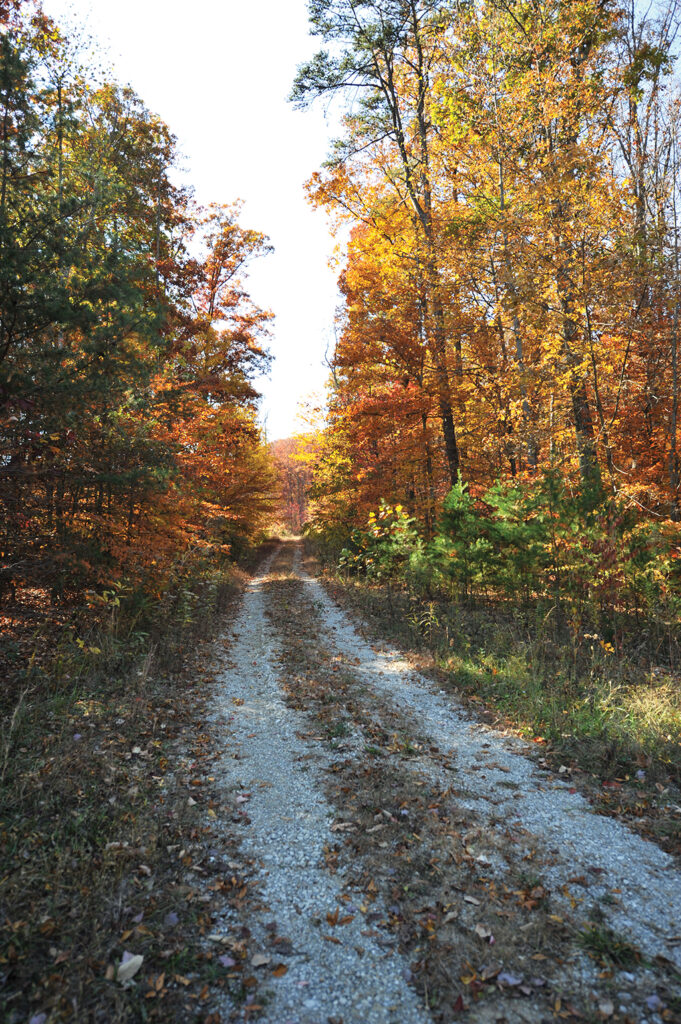For Clint Patterson, Berea College’s forester, the holy grail of conservationism is to find economic solutions to environmental problems.

“If we could just figure out a way for our economic system to pay for ecological services, then it would solve so many problems,” Patterson said. “We’d be taking care of the environment, and landowners would be rewarded for doing it.”
For the past few years, Patterson and colleagues have been working toward this economic environmentalism in the simplest of ways: just letting the forest grow.
The College’s 9,000-acre forest—one of the oldest continuously managed educational forests in the country—has ushered in a new era at Berea through California’s carbon offset credit market. The result is a consistent revenue stream
generated simply by letting the trees absorb carbon dioxide from the atmosphere.
By doing this, the forest earned Berea College $3 million for the environmental stewardship of the past century, and the forest will generate upwards of $300,000 annually going forward, thanks to California’s effort to create a marketplace for absorbed carbon dioxide.
“Californians wanted to prove they could institute a system where they could put a cap on how much greenhouse gases industries could emit,” said Joan Pauly, Berea College sustainability coordinator. “Many people thought the economy would implode, but it didn’t. It actually created a new economy.”
In 2006, the California legislature passed the Global Warming Solutions Act, which set the goal of reducing the state’s greenhouse gas emissions to 1990 levels by 2020 and to a level of 80 percent below 1990 levels by 2050. Part of this legislation established a cap-and-trade system that created a market for carbon offset credits, which could be sold to industrial polluters that had reached or would reach their emissions limits. By attaching a cost to emissions, the industries are incentivized to find ways to reduce the amount of carbon they release into the atmosphere. The California system allows up to 8 percent of a polluter’s emissions to be offset.
Polluters have come into the market to buy offsets to bring their emissions down. … So we’ve come into that market as a seller. We sell carbon dioxide that’s been captured in our forest.
Derrick Singleton
“Polluters have to come into the market to buy offsets to bring their emissions down,” said Derrick Singleton, Berea College’s vice president for operations and sustainability. “So, we’ve come into that market as a seller. We sell carbon dioxide that’s been captured in our forest.”
“Our trees actually scrub carbon dioxide out of the atmosphere,” Pauly added, noting the dangers of allowing greenhouse gases to increase the earth’s average temperature. “They’re like a sponge.”
Many other Bereans have come to see the College forest as a treasure. Judge Wilson ’78, a mountaineer and outdoorsman when he is not serving the College as general counsel, is one devotee. In President Lyle Roelofs’ first fall in Berea, Wilson took the president for a long hike to look out over Horse Cove, a wooded area lying beneath the ridges of the Pinnacle system that had recently come on the market.
“I was immediately struck by the beauty of the woods, the delight of hiking the trails and the potential of the forest for so many activities of the College, ranging from education to recreation to tourism to providing high-quality wood for construction on campus and Student Crafts,” Roelofs said, remembering that day and that hike. “I resolved then to support, as far as possible, the continued sustainable development and expansion of this amazing resource.”
Over the past decade, Berea College has increased the size of its forest by purchasing adjacent properties for the purpose of protecting the watershed, which provides water to the entire city of Berea, and to protect the forested land in the area from deforestation and development.
In 2014, the College partnered with New Forests, an Australian firm that specializes in carbon offsets. New Forests managed the process of inventorying Berea’s 9,000 acres to determine how much carbon the forest absorbs. The company also manages the sale of carbon credits in the California market, which are sold in metric-ton units.
“Early on,” Singleton said, “we hoped there would be landowners, particularly in Appalachia, who would look at the carbon offset market as a way to generate revenue from their forests while leaving them pristine. A lot of landowners are tempted to just clear cut. This is an alternative.”
Sellers in the carbon market commit to maintaining their trees for 100 years. The trees are insured against fire or eminent domain to protect the “carbon stock.” There is a certain allowance for forest maintenance operations like prescribed burning or removal of trees under five inches in diameter. In Berea’s case, there is room for a certain amount of logging that does not cut into the carbon stock.
Typically, the only way you could get value out of your land was if you developed it by farming it or selling it to a builder. But now you have a way to maintain your trees and make money. That’s a whole new model I’m really excited about.
Joan Pauly
Even with this logging allowance, the Forestry department, with horses and mules, only harvests a third of the 2 million board feet of wood per year permitted to maintain its certification with the Forest Stewardship Council. This logging limit is self-imposed by the College to preserve the multiple uses of the forest, like the watershed, the hiking trails used by the community and visitors, and forestry education and internships.
The amount of land needed to generate meaningful revenue is large, but the amount is coming down as the price of carbon offsets goes up. Though initially, a minimum of 4,500 acres was recommended, that number has dropped to around 2,500 acres over the past few years.
The Berea College Forest is unique. The trees are mature and plentiful, meaning that the carbon storage potential is larger than forested land on average. Board feet per acre is nearly double the baseline for the region.
“Our forest is much more mature,” Patterson said, explaining how available board-feet and metric tons of stored carbon are measured in a similar way. “It’s been harvested much more conservatively over the years.”
Still, for those with enough forested land, especially in land trusts or on Native American reservations, the carbon offset market serves as an alternative to less sustainable practices.
“Typically, the only way you could get value out of your land was if you developed it by farming it or selling it to a builder,” Pauly said. “But now you have a way to maintain your trees and make money. That’s a whole new model I’m really excited about.”
As of right now, Berea College is the only college in the country participating in the carbon offset market, but other schools that own forests are in the process of joining, making Berea a leader in the space. The money the College generates through the carbon offset market is itself an offset of the costs of forest management. A portion of the money has been allocated to an endowment for this purpose, to expand the horse logging already in use, and to pay for future expansion of the forest that will further protect the watershed.
But for Patterson, the money brings something else: the freedom to take on projects he otherwise would not be able to pursue.
“For me as a forester,” Patterson said, “the great thing about this carbon project is that it allows me to do really cool, creative things in the forest that are geared towards forest restoration. I’ve got an initiative to regenerate white oak and American chestnut, for example. These are really lofty projects, but they don’t bring in money. A forest like ours that’s really ecologically unique and has been used over the years should keep being used in ways that are actually restoring it, rather than only for the timber value. It makes my job really great because I can come to work and think, you know, we’ve already got some carbon money coming in, and that takes some pressure off to cut.”
And besides, notes Patterson, the Berea College Forest is the people’s forest. Not only does it provide clean water to the city of Berea, it serves as a place of education and leisure.
“This beautiful forest isn’t just an asset,” Patterson said. “It’s everybody in this community’s forest, and we’re all benefiting from the carbon money because it allows us to really take care of it in a sustained way that makes me look forward to the next 100 years.”




[…] college’s 9,300-acre forest is the town’s aquifer and contributes financially on the cap-and-trade contract. Joan Pauly explained: “Californians wanted to prove they could institute a system where they […]
[…] school’s 9,300-acre forest is the city’s aquifer and contributes financially on the cap-and-trade contract. Joan Pauly defined: “Californians wished to show they might institute a system the place they […]
[…] ορίζοντας της πόλης και συμβάλλει οικονομικά στην συµβόλαιο cap-and-trade. Η Joan Pauly εξήγησε: «Οι Καλιφόρνιες ήθελαν να αποδείξουν […]
[…] faculty’s 9,300-acre forest is the city’s aquifer and contributes financially on the cap-and-trade contract. Joan Pauly defined: “Californians wished to show they may institute a system the place they may […]
[…] college’s 9,300-acre forest is the town’s aquifer and contributes financially on the cap-and-trade contract. Joan Pauly explained: “Californians wanted to prove they could institute a system where they […]